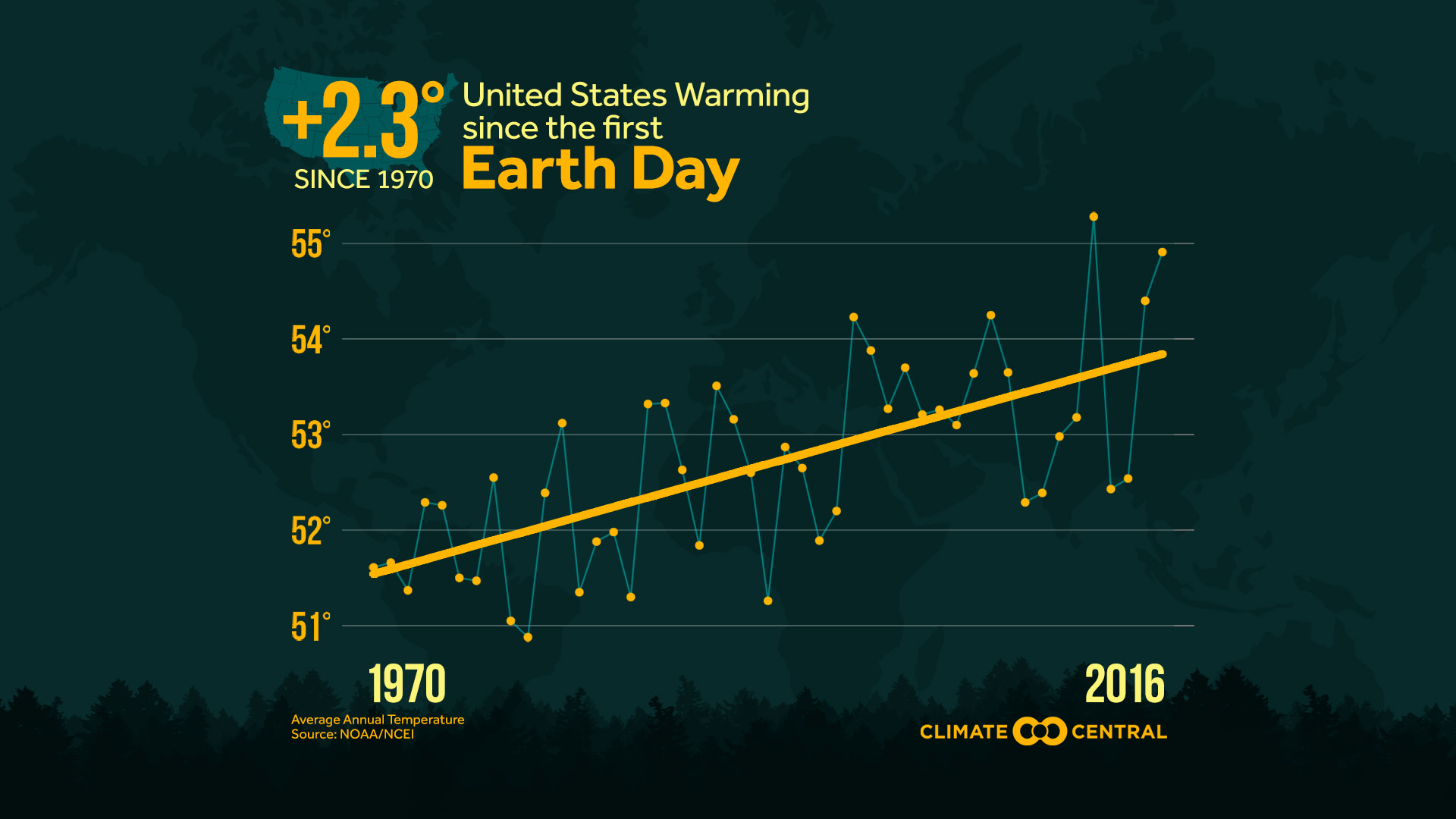In 1895, Svante Arrhenius first calculated the impact that increasing carbon dioxide could have on Earth’s temperature. Since then, scientists have further refined their understanding of the greenhouse effect and the role our rising carbon emissions are having on it. From the first Earth Day in 1970, carbon dioxide in the atmosphere has risen 24 percent. And because carbon dioxide remains in the atmosphere for centuries, the impacts of our emissions today will linger long into the future.
Chief among the impacts is the rise in the global temperature. That’s why countries around the world have agreed to limit that warming to well below 2°C above pre-industrial temperatures.
To keep track of how close the world is getting to that crucial threshold, we’ve combined the monthly global temperature analyses from NOAA and NASA and compared that average against an earlier baseline from 1881-1910 — the earliest baseline based on reliable, global data. March 2017 was 1.34°C (2.41°F) degrees above that baseline and the 627th consecutive month with global temperature above that average.
We also examined the temperature rise in the continental U.S. since the first Earth Day in 1970. The average annual temperature in every state has risen. Broken down by seasons, spring is warming fastest in the Southwest, while summer is warming fastest in Texas. Winter is warming fastest across the northern tier of the U.S., and fall is warming the fastest in the Intermountain West.
